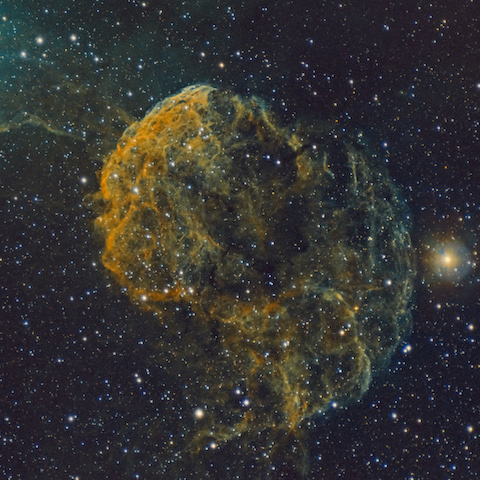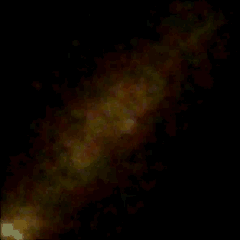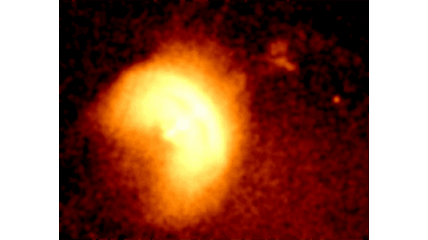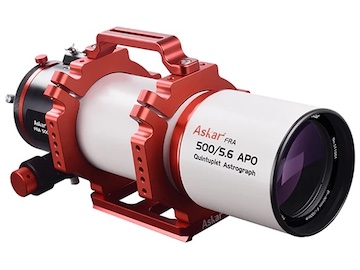Vela Supernova Remnant Nebula - Astrophotography
- Antoine & Dalia Grelin
- Mar 3, 2023
- 10 min read
Updated: May 17, 2023
Supernova remnants are the leftover results from the explosions of massive stars into supernovae. They are some of the most beautiful objects in the night sky, and can span to gigantic sizes. One of the most famous supernova remnants in the sky is located in the constellation Vela, and is only visible from the southern hemisphere.
Object Designation: Vela SNR
Also known as: The Vela Supernova Remnant
Constellation: Vela
Object Type: Supernova Remnant
Distance: 815 light-years away
Magnitude: 12.0
Discovery: 1968
In this post, we will tell you all about the beautiful Vela supernova remnant, and show you our attempt at processing 17 hours of data on that object.
Vela Supernova Remnant Wide-Field Astrophotography

The constellation Vela does not rise in our skies because we live too far to the north. This means it is simply impossible for us to use our backyard telescope to capture this object.
Like some other southern deep sky objects you may have seen on our website, like the Statue of Liberty Nebula, NGC 1365, or the Chamaeleon Cloud Complex,
we decided to use Telescope Live which allows anyone to easily use a remote telescope in several different locations in the world.
The data we processed below was taken with the telescope pictured above, from a location where Vela rises high enough to be imaged: Australia!
The picture below totals 17 hours of exposure time and was processed using PixInsight.
The Vela Supernova Remnant shows so many filaments. Click for High-resolution.
Want to process your images following our own workflow? Get our PixInsight Processing Guide!
GEAR USED:
Camera: FLI PL16803
Telescope: Takahashi FSQ-106
Mount: Software Bisque Paramount MX+
Processing: Pixinsight, with RC-Astro plugins
ACQUISITION DETAILS:
Total Exposure Time: 17 hours
Exposure Time per frame: 5 minutes
Filters: SHO
What is the Vela Supernova Remnant?
The Vela Supernova Remnant is a massive object mostly made up of hydrogen alpha and oxygen III in the constellation Vela. It was created from the supernova explosion of a massive star, approximately 11,000 to 12,300 years ago.
The Vela Supernova Remnant was born from a Type II Supernova. Type II Supernovae occur when a star, between 8 and 50 times the mass of our Sun, explodes violently and contains hydrogen in its spectrum composition.
The Vela Supernova Remnant is one of the closest supernova remnants to Earth, and has some of the brightest and largest X-ray features in the sky.
The Jellyfish Nebula (IC 443) and the famous Crab Nebula (Messier 1) seen above, are also both Type II supernova remnants.
How to find the Vela Supernova Remnant in the Sky?
The Vela Supernova Remnant can be found approximately 800 light-years away in the constellation Vela.
The best time to photograph the Vela Supernova Remnant is in Spring, when Vela gets to its highest point in the sky. Remember, you will need to be located in the southern hemisphere to be able to image this target.
The whole supernova remnant can be seen circled on the map below.

Other popular deep sky objects near the Vela Supernova Remnant include:
NGC 3201
The Gum Nebula
Eta Carinae Nebula
Omicron Velorum Cluster
The constellation Vela is located close to Puppis, Carina, and Pyxis. The four were once a single constellation, named Argo Navis and outlining a big ship. Carina represented the keel, Puppis the deck, Vela the sails, and Pyxis the mariner's compass.
Argo Navis was by far the largest constellation in the sky, and remained that way until the 20th century when it was divided into smaller sections. To learn more about this and all 88 constellations, be sure to check out The Constellations Handbook!

To find the Vela Supernova Remnant, look for the two bright stars in Vela "Suhail" and "Suhail al Muhlif". Your target is located exactly in between these two stars.
It is not possible to spot this object with your naked eye, and do not expect to be impressed when looking through a telescope either. The best way to experience this large supernova remnant is through astrophotography!
How far is the Vela Supernova Remnant?
The Vela Supernova Remnant was born from a supernova that happened in our Milky Way galaxy. The nebula is believed to be located approximately 815 light-years away from Earth (250 parsecs).

At 815 light-years away, the Vela Supernova Remnant is one of the closest supernova remnants in our night sky.
For comparison, the famous Crab Nebula supernova remnant (Messier 1) is located 6,500 light-years away from the Solar System.
The Vela Supernova Remnant by NASA
NASA published an impressive mosaic image of the Vela Supernova Remnant and surrounding gasses on January 10, 2019. The image below shows a field of view 16 degrees wide, and is a mosaic made up of 200 frames.
The image includes the Vela Supernova Remnant of course, as well as the Gum Nebula, the Pencil Nebula, several star clusters, and the Vela pulsar.

The Vela Pulsar
The Vela pulsar is the leftover of the neutron star that went supernova. The massive explosion left behind an incredibly dense pulsar, which expels a long cosmic jet from one of its rotational poles, as a well as counter jet. The particles coming out of the jet get expelled at 70% of the speed of light.

The Vela pulsar is located 1,000 light years away from the Solar System, and has a diameter of 12 miles.
The pulsar and its jets can be seen on the image on the right, taken by NASA's Chandra X-ray observatory.
The Vela Pulsar is seen as the tiny white dot in the center, swimming in hot orange and yellow gas. The long jet on the upper right is the counter jet.
NASA has been studying the Vela Pulsar for a long time using the Chandra X-Ray observatory.
With the data collected over the years, they were able to create this incredible video of the jet being expelled from the pulsar. You can clearly see the jet's motion and the change in brightness over a period of time.
The Vela pulsar rotates 11 times per second. Check out this video to hear the real sound it makes as it rotates. It's actually pretty scary to think about, especially knowing that there are some other pulsars out there that spin at much faster speeds.
The Vela Supernova Remnant by the Hubble Space Telescope

The Hubble Space Telescope pointed itself toward the Vela Supernova Remnant and took an image that was released on June 5, 2003. Because of its massive size, it is impossible for the entire supernova remnant to fit in the HST's field of view, and so the telescope focused on a tiny area in the vicinity: the Pencil Nebula.
NGC 2736 is known as the Pencil Nebula due to it's thin long shape, and has some nicely structured filaments of gas. As you can see, the Hubble Space Telescope could not even fit the whole pencil itself in the frame, so imagine if it tried to capture the entire Vela Supernova Remnant!
Our Premium Astrophotography Course
Want to learn all aspects of astrophotography in the most efficient way possible?
The Galactic Course includes a LIFETIME membership that gives you unlimited access to all current and upcoming astrophotography content. Step into an ever-growing realm of knowledge and learn at your own pace. Make life-long friends and connections with other members, and get tips from instructors that truly care about your journey and progress under the night sky.
Recommended Equipment for Astrophotography of the Vela Nebula
The Vela Supernova Remnant is huge, so the best way to capture the whole object is to use a small telescope or a camera lens.
Telescope recommendations
For telescopes, we suggest using something around 350-400mm in focal length, like the two you see below. We have used both of these telescopes and found them great, especially when paired with a full-frame camera to make your field of view even larger.
Askar FRA 500 with f/3.9 reducer:
Focal Length: 500mm, but 350mm with the reducer
Aperture: 90mm
Focal Ratio: f/5.6 but f/3.9 with the reducer
Focal Length: 405mm
Aperture: 75mm
Focal Ratio: f/5.4
Camera Lens recommendations
If you are a beginner astrophotographer and do not want to get a telescope yet, you can capture the Vela Supernova Remnant with a fast lens! If you own a DSLR or mirrorless camera and a star tracker, we recommend getting the Samyang 135mm f/2, one of our favorite lenses of all time for astrophotography. It is fast (f/2) and the stars look great all over the field of view.
Using Telescope Live to Capture Deep Sky Objects
Like we said earlier, we used Telescope Live to obtain the data for this image of the Vela Supernova Remnant! Using Telescope Live allows you to either control a remote telescope under dark skies and image the target of your choice, or directly download a set of data that was previously acquired by others, at a much lower cost.
The image we processed here was taken from a Takasahi FSQ-106 in Australia. The owners of Telescope Live sent us a gift voucher for you to use if you'd like to give it a try also. If you are interested, you can use the code "TL4GH" when signing up!
Examples of other images we got using Telescope Live include the Bug Nebula, the Tarantula Nebula, the Great Barred Spiral Galaxy, and more!
Do I Need Filters to Photograph the Vela Supernova Remnant?

As you will see in the "Processing" section of this post, the Vela Supernova Remnant is rich in Hydrogen Alpha, Oxygen III, and Sulfur II! Getting all three of these narrowband signals is important if you want to get the best out of the target.
Although a monochrome camera and narrowband filters are the best way to go for this object, you can also use an OSC/DSLR/Mirrorless camera and either a duo-band filter or a hydrogen alpha filter to get a great result.
Processing the Vela Supernova Remnant
The Vela Supernova Remnant was a great target to process, because it fills up almost the entire frame and contains so many interesting details that can be enhanced. The goal is also to bring out all the faint gases all over the image and colorize the data in a natural way.
In this case, I combined the three monochrome channels you see below into the Hubble palette, so S-H-O.
Creating masks was difficult in this case because, despite the bright filaments of gas forming this big ball-shape, there is a lot of extra gas in the background that also gets picked up. In the end, I decided not to use any mask and process the starless image all the way before re-adding the stars at the very end.
Stacked results from each filter, in order H > S > O
Overall, I mostly followed our usual PixInsight workflow for this target. If you would like to access a full course on our own processing workflow for nebulae, step-by-step, you can do so HERE. Included are 20 lessons, our process icons, our raw data, and 18 walkthrough videos. We also have a basic version available that focuses more on RGB data. It also includes a section on how to download and process data from the James Webb Space Telescope.
Vela Supernova Remnant FAQ
In which constellation is the Vela Supernova Remnant located?
You can find the Vela Supernova Remnant in the constellation Vela.
How big is the Vela Supernova Remnant?
The Vela Supernova Remnant spans 100 light-years across.
How far is the Vela Supernova Remnant?
The Vela Supernova Remnant is located approximately 800 light-years away from Earth.
How long should my exposure time be when photographing the Vela Supernova Remnant?
600 seconds (10 minutes) is what we usually do for most nebulae. Telescope Live did 300-second exposures for this data, and that's also good, although we would go longer.
Should I use a filter to image the Vela Supernova Remnant?
The Vela Supernova Remnant is rich in all three narrowband gasses, so we do recommend you use narrowband filters. If you do not own a monochrome camera, use a duoband filter at the very least a hydrogen alpha filter to add up to your RGB data. You can also simply capture this object without filters if imaging from a dark site.
What equipment do I need to photograph the Vela Supernova Remnant?
A tracker or equatorial mount is crucial. You can then use either a small telescope (300-500mm focal length) or a fast camera lens (like the Rokinon 135mm f/2) to image this object.
What type of nebula is the Vela Supernova Remnant?
The Vela Supernova Remnant is, as its name implies, a remnant of a supernova.
Final Thoughts
The Vela Supernova Remnant is a nice target to photograph with a small telescope. The wide field of view will allow you to include the entire supernova remnant, as well as other gases visible around the object.
If you are located in the northern hemisphere, you won't be able to capture this target due its position in the sky. If you want to process it, we suggest using a company like Telescope Live to either launch a new set of photos on the object or directly download a data set. You can use the code TL4GH if you would like to get a discount!
Have you captured the Vela Supernova Remnant? If so, add your pic to the comments section, we'd love to see it!
Clear Skies,
Galactic Hunter
GALACTIC HUNTER BOOKS
Description: Discover 60 Deep Sky Objects that will considerably improve your Imaging and Processing skills! Whether you are a beginner, intermediate, or advanced astrophotographer, this detailed book of the best deep sky objects will serve as a personal guide for years to come! Discover which star clusters, nebulae, and galaxies are the easiest and most impressive to photograph for each season. Learn how to find each object in the night sky, and read our recommendations on imaging them in a quick and comprehensive way. Each target in this guide contains our advice on imaging, photos of expected results, and a useful information table. We've also included a few cool facts about each target, a map to find it in the night sky, and more!
Description: The Astrophotographer’s Journal is a portable notebook created for the purpose of recording observations, cataloguing photographs, and writing down the wonderful memories created by this hobby. This book contains more than 200 pages to memorialize your stargazing and imaging sessions, as well as a useful chart on the last pages to index exciting or important notes. Read back on the logs to see how much progress you have made through the months, the problems you overcame, and the notes taken to improve in the future. Just as the pioneers of astronomy did in their time, look up and take notes of your observations as you are the author of this star-filled journey.
Description: The Constellations Handbook is a logical guide to learning the 88 constellations. Learning the constellations is difficult. Remembering them is even harder. Have you ever wanted to look up to the night sky, name any pattern of stars and be able to tell their stories? This book groups the constellations in a logical order, so that the reader can easily learn them by their origin, and see how their stories interact with one another as a group. The last pages of this book include an index of all 88 constellations, each with a slot where you can write your own personal tips and tricks in order to memorize them with ease. The Constellations Handbook is not just another guide listing all the constellations from A to Z and their location, it is the perfect companion for stargazing, and a learning journey through the ages.

































